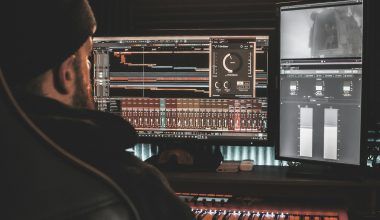If you’re an artist, you probably dream of having your music heard by people all around the world. Thanks to technology, this dream is more achievable than ever. But how can you make sure your tracks are available everywhere? The answer lies in knowing how to distribute your music on all streaming platforms quickly. Let’s break it down step by step in simple, easy-to-understand terms.
Why Distributing Your Music Everywhere Matters
Imagine this: you’ve worked hard on a song, and it’s ready to be shared. But if you’re only uploading it to one platform, you’re missing out on a huge audience. Platforms like Spotify, Apple Music, Amazon Music, and Tidal cater to millions of listeners. Each one has its unique audience, and you want your music to reach as many ears as possible. Plus, having your tracks available globally helps you gain fans, grow your brand, and even earn revenue from streams.
In the past, getting your music out there was complicated. You needed industry contacts, a record label, or a physical distributor. But today, you can distribute your music across all streaming platforms quickly with the right tools and tips.
Step 1: Choose a Music Distribution Service
The first thing you need is a reliable music distribution service. These companies act as a bridge between you and streaming platforms. They upload your music to major platforms so you don’t have to do it individually.
Some popular music distribution services include:
- Delivermytune: Known for its speed and ease of use.
- TuneCore: Offers additional services like publishing and sync licensing.
- CD Baby: Great for artists who want to sell physical copies alongside digital distribution.
- Amuse: A free option for independent artists.
Choosing the right service depends on your budget, goals, and how much control you want over your music.
Step 2: Get Your Tracks Ready
Before you distribute your music, make sure everything is polished. Streaming platforms have strict requirements, so you’ll need to:
- Use High-Quality Audio Files: Most platforms accept WAV or FLAC files. These formats ensure the best sound quality.
- Create Artwork: Your album cover or single artwork is the first thing listeners will see. Make it eye-catching and relevant.
- Add Metadata: Include your track title, artist name, album name, and genre. Accurate metadata helps listeners discover your music more easily.
- Check Your Lyrics: If your song has lyrics, submit them to platforms that support lyric displays, like Apple Music and Instagram Stories.
Getting these details right is crucial to distribute your music smoothly and professionally.
Step 3: Upload and Set a Release Date
Once your tracks are ready, log into your chosen distribution service and start uploading. Most platforms allow you to set a release date. This lets you build anticipation and promote your music ahead of time.
When uploading, double-check:
- Track names and spellings
- Artist credits (especially for collaborations)
- Release type (single, EP, or album)
Setting a release date also gives you time to pitch your music to playlists and promote it on social media.
Step 4: Optimize for Streaming Platforms
After uploading your music, it’s time to optimize your presence on streaming platforms. Here’s how you can do that:
- Claim Your Artist Profiles: Platforms like Spotify and Apple Music allow you to claim your artist profile. This lets you customize your bio, add photos, and share links.
- Pitch to Playlists: Playlists can help your music reach thousands of listeners. Spotify for Artists, for example, lets you pitch unreleased tracks directly to their editorial team.
- Engage Your Fans: Use tools like Spotify Canvas or Instagram Stories to share snippets of your music. Interaction drives engagement, which helps your songs gain traction.
By taking these steps, you’ll not only distribute your music but also make it stand out.
Step 5: Promote Your Music Everywhere
Distribution is just the beginning. To make the most of your efforts, you’ll need a solid promotion strategy. Here are some tips:
- Leverage Social Media: Share teasers, behind-the-scenes content, and music links on platforms like Instagram, TikTok, and Twitter.
- Collaborate With Influencers: Reach out to influencers in your niche to help spread the word.
- Run Ads: Use targeted ads on Facebook, Instagram, or YouTube to promote your music to a broader audience.
- Email Your Fans: If you have an email list, let your subscribers know about your new release.
Consistency is key. The more people see your music, the more likely they are to listen.
Step 6: Monitor and Analyze Your Performance
Once your music is live, don’t forget to track its performance. Most streaming platforms and distribution services offer analytics. You can see how many streams you’re getting, where your listeners are located, and which tracks are the most popular.
Use this data to:
- Plan future releases
- Target your promotion efforts
- Understand your audience better
Analytics are a powerful tool that can help you grow your music career.
Final Thoughts
Distributing your music on all streaming platforms quickly is easier than ever. By following these steps, you’ll not only get your tracks out there but also set yourself up for success. Remember, the key is to be organized, consistent, and proactive.
So, what are you waiting for? Take the leap and let the world hear your music!
Related Articles:
For further reading, explore these related articles:
For additional resources on music marketing and distribution, visit DMT RECORDS PRIVATE LIMITED.






